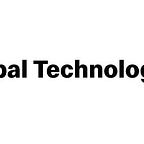A product manager’s view on developing a global product at scale
The right operating model and mindset are key to launching a digital product in a complex environment, like McDonald’s.
by Tiffany Podge, Global Product Leader
Developing a digital product that transcends borders and fulfills a universal customer need is no small feat. It entails embarking on a marathon rather than a sprint, navigating through a landscape with technical obstacles — both expected and not — and human challenges.
In my role as a global product leader at McDonald’s, I had the opportunity to spearhead the development and launch of a marketer-facing global product while pioneering new ways of working. The resounding feedback from our global stakeholders regarding the launch was encapsulated in a single word: “relaxed.” Such feedback was truly gratifying!
Let us dig into the secret sauce for how we approached the development and operationalization of tech at scale at McDonald’s!
Foundationally, the right product operating model must be in place where product managers, tech leads and designers — the triad — are collaborating to ensure the product built is not only solving a valuable problem, but also viable, usable, and feasible.
A good product manager should have the following superpowers:
1. Maker: Hands-on leader whose craft includes connecting people, technology, and design to create seamless products and experiences without exposing complexity.
2. Panoramic vision: Balancing visionary foresight with tactical execution, with an unwavering focus on enhancing the user experience. This entails striking a delicate balance between ambition and progress, both in the present and the future.
3. Listener: Recognizing the indispensable role of customer feedback and business pain points in shaping the product experience. By adopting a student-of-the-business mindset, product managers can leverage insights to drive meaningful commercial impact.
4. Passionate: A fervent commitment to empower teams, fostering a culture of continuous learning and growth.
By embodying these traits, we were able to revolutionize our approach to product development and operationalization on a global scale.
Once the triad is empowered, it falls upon the product manager (PM) to ensure the value proposition remains steadfast at every juncture while guiding the organization forward.
It can be frustrating when the team conducting discovery, gathering requirements, crafting solutions, and developing an MVP (minimal viable product) does so in isolation, only to throw it over the fence for another team scale.
Engaging stakeholders — whether the product is targeted toward business or customer end users — and fostering trust through active listening are indispensable. I cannot emphasize this enough!
To ensure the best customer experience, the PM must deliberately assess the value of any configuration and establish governance to evaluate requests.
Arguably, most of the hidden challenges in scaling a global product stem from reshaping the organizational mindset. Encountering a fixed mindset, where someone may offer reasons why things cannot be done, presents an opportunity. This is my favorite way to stretch a colleague.
Drawing from my consumer insights background, I’ve embraced a “why not” framework. Regardless of the objections raised, asking “why not” three times invariably uncovers valuable insights or leaves you eating your Chicken McNuggets® alone.
Interacting with colleagues who possess a growth mindset is the key to unlocking genuine product innovation and scalability.
Fortunately, McDonald’s has attracted top-tier talent, fostering an environment ripe for innovation. Cultivating an open mindset nurtures inner agility. It is essential to prioritize learning over being right, shedding confirmation bias, and welcoming perspectives that challenge existing beliefs.
Here are three tips for cultivating a growth mindset:
1. Promote a culture of experimentation: Embrace failure, as long as you learn and don’t continue to make the same mistake again.
2. Embrace feedback: As experimentation occurs, focus on the feedback loop.
3. An imperfect decision is better than no decision: Don’t unnecessarily prolong the debate or discussion. Make an informed decision while balancing timing.
